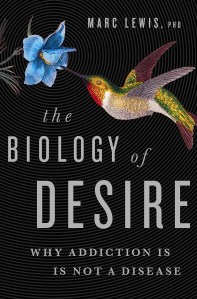“The Biology of Desire,” by Marc Lewis
It’s not as rare as you might think for babies to be born with two or more fingers webbed together: Syndactyly, as it is called, occurs once in every 2,000 to 2,500 births, but parents often arrange to have the fingers separated as soon as it is practicable.
In 1993, researchers from New York University Medical Center went looking for adults whose webbed fingers had never been separated. They scanned the adults’ brains before and after separation surgery, and they found that within just a few weeks the brain dramatically changed how it processed the sense of touch.
“Clusters of neurons that had fired together now fired independently. . . . The brain adjusted its wiring, breaking down the coherent habit it had assumed . . . and replacing it with new habits,” Marc Lewis writes in “The Biology of Desire: Why Addiction Is Not a Disease.”
What does this anecdote have to do with addiction? It’s about neuroplasticity — a trendy term in medical journalism, and the key element in Lewis’ argument that addiction is a malleable function of a healthy brain.
Addicted brains are simply doing what nature meant them to do, he says — maximizing pleasure — and we can “realign” them to find another way to do that. The seemingly far-fetched analogy to separated fingers, he says, actually understates what might be possible for treating addiction, since the region of the brain responsible for judgment and self-control remains plastic, or changeable, far longer than other parts of the brain.
Lewis, who is not only a neuroscientist but also a former drug addict, makes a somewhat vague but impassioned case for using our knowledge of neural pathways to build on such treatments as cognitive behavioral therapy and 12-step programs. It’s not as straightforward as hand surgery, but he believes we can train the brain to make addiction “no more than a stage in the development of the self.”

Comments are no longer available on this story